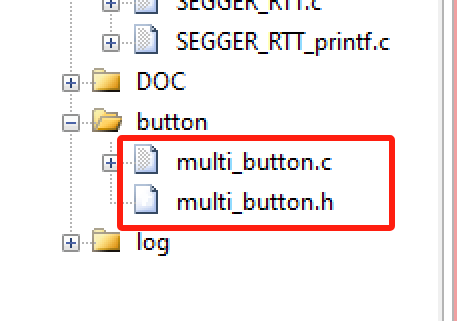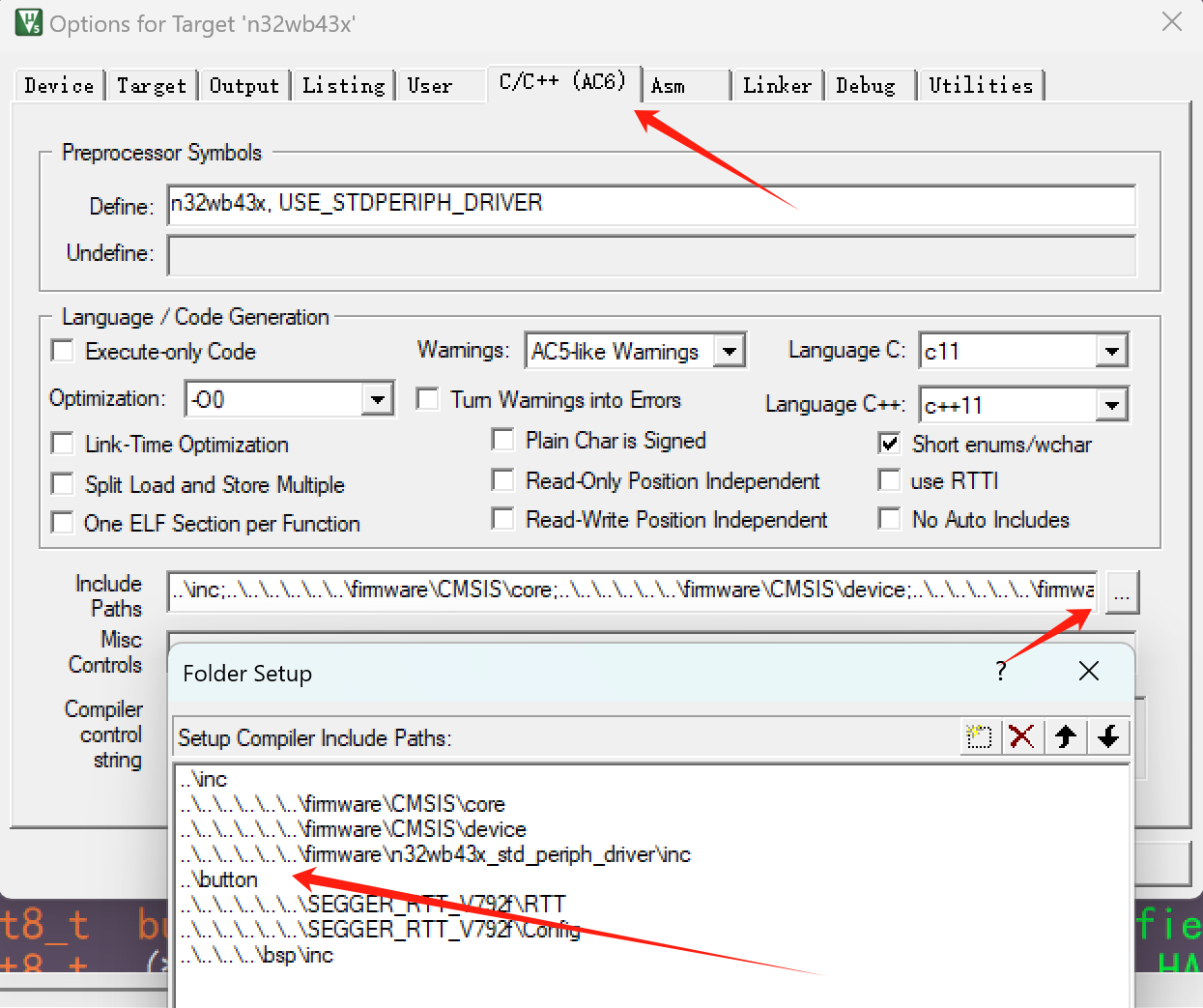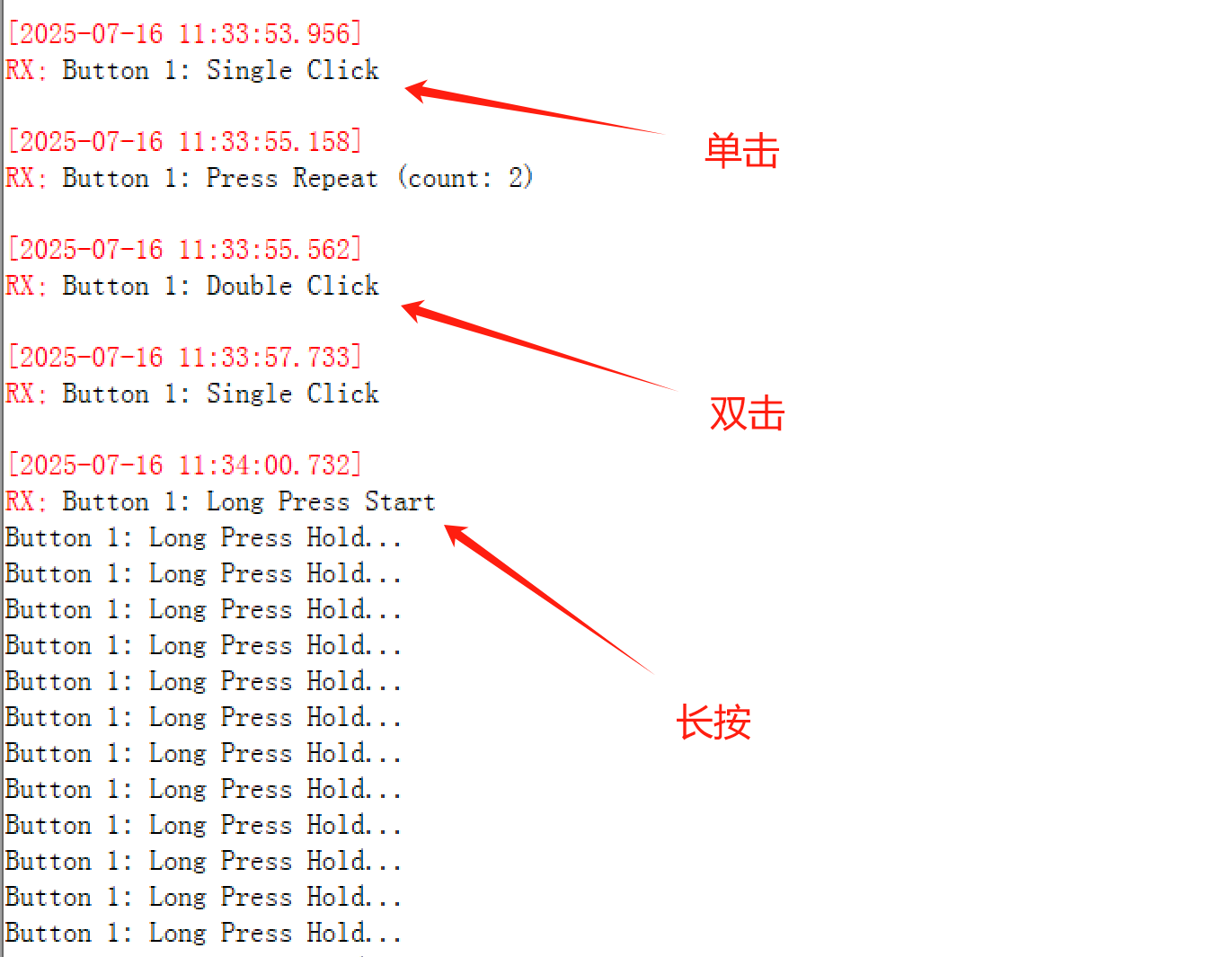1
2
3
4
5
6
7
8
9
10
11
12
13
14
15
16
17
18
19
20
21
22
23
24
25
26
27
28
29
30
31
32
33
34
35
36
37
38
39
40
41
42
43
44
45
46
47
48
49
50
51
52
53
54
55
56
57
58
59
60
61
62
63
64
65
66
67
68
69
70
71
72
73
74
75
76
77
78
79
80
81
82
83
84
85
86
87
88
89
90
91
92
93
94
95
96
97
98
99
100
101
102
103
104
105
106
107
108
109
110
111
112
113
114
115
116
117
118
119
120
121
122
123
124
125
126
127
128
129
130
131
132
133
134
135
136
137
138
139
140
141
142
143
144
145
146
147
148
149
150
151
152
153
154
155
156
157
158
159
160
161
162
163
| #include "main.h"
#include <stdint.h>
#include "User_Systick_Config.h"
#include "multi_button.h"
#include <stdio.h>
#include <signal.h>
#include <stdlib.h>
#include "SEGGER_RTT.h"
void SysTick_Handler(void)
{
button_ticks();
}
void Delay(uint32_t count)
{
for (; count > 0; count--)
;
}
static Button btn1, btn2;
static volatile int running = 1;
static int btn1_state = 0;
static int btn2_state = 0;
void signal_handler(int sig)
{
if (sig == SIGINT) {
printf("\nReceived SIGINT, exiting...\n");
running = 0;
}
}
uint8_t read_button_gpio(uint8_t button_id)
{
switch (button_id) {
case 1:
return (GPIO_ReadInputDataBit(GPIOA, GPIO_PIN_15) == Bit_SET);
case 2:
return btn2_state;
default:
return 0;
}
}
void btn1_single_click_handler(Button* btn)
{
(void)btn;
printf("Button 1: Single Click\n");
}
void btn1_double_click_handler(Button* btn)
{
(void)btn;
printf("Button 1: Double Click\n");
}
void btn1_long_press_start_handler(Button* btn)
{
(void)btn;
printf("Button 1: Long Press Start\n");
}
void btn1_long_press_hold_handler(Button* btn)
{
(void)btn;
printf("Button 1: Long Press Hold...\n");
}
void btn1_press_repeat_handler(Button* btn)
{
printf("Button 1: Press Repeat (count: %d)\n", button_get_repeat_count(btn));
}
void buttons_init(void)
{
button_init(&btn1, read_button_gpio, 0, 1);
button_attach(&btn1, BTN_SINGLE_CLICK, btn1_single_click_handler);
button_attach(&btn1, BTN_DOUBLE_CLICK, btn1_double_click_handler);
button_attach(&btn1, BTN_LONG_PRESS_START, btn1_long_press_start_handler);
button_attach(&btn1, BTN_LONG_PRESS_HOLD, btn1_long_press_hold_handler);
button_attach(&btn1, BTN_PRESS_REPEAT, btn1_press_repeat_handler);
button_start(&btn1);
}
void KeyInputExtiInit(GPIO_Module* GPIOx, uint16_t Pin)
{
GPIO_InitType GPIO_InitStructure;
EXTI_InitType EXTI_InitStructure;
NVIC_InitType NVIC_InitStructure;
RCC_EnableAPB2PeriphClk(RCC_APB2_PERIPH_GPIOA | RCC_APB2_PERIPH_AFIO, ENABLE);
GPIO_InitStruct(&GPIO_InitStructure);
GPIO_InitStructure.Pin = Pin;
GPIO_InitStructure.GPIO_Pull = GPIO_Pull_Up;
GPIO_InitStructure.GPIO_Mode = GPIO_Mode_Input;
GPIO_InitPeripheral(GPIOx, &GPIO_InitStructure);
}
int main(void)
{
buttons_init();
Systick_MS_Config(SystemCoreClock);
KeyInputExtiInit(GPIOA, GPIO_PIN_15);
while (1)
{
}
}
|


